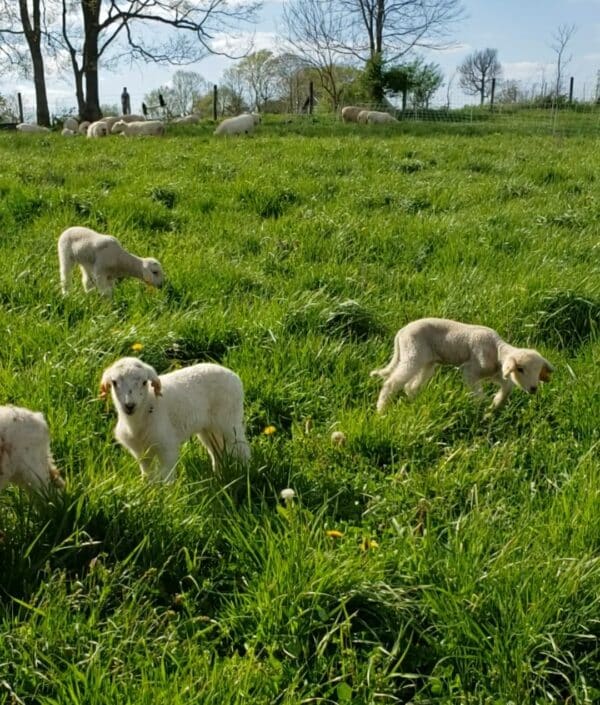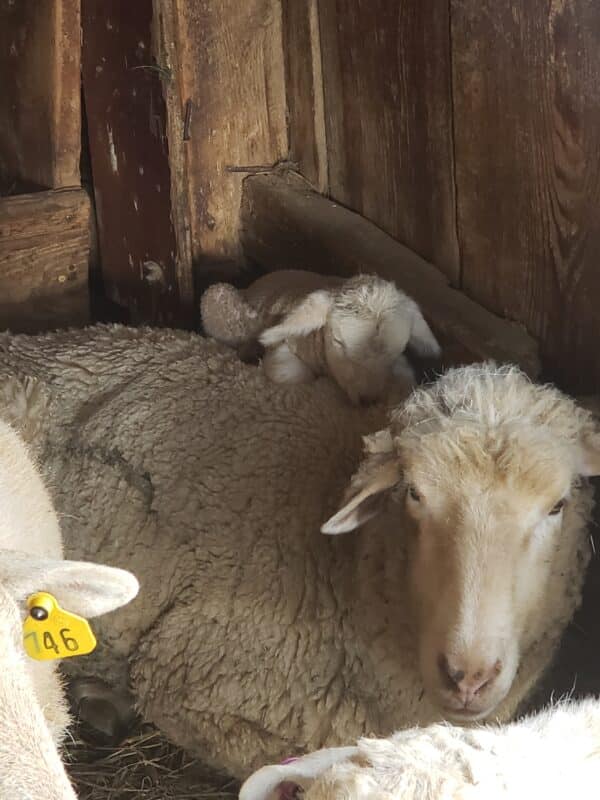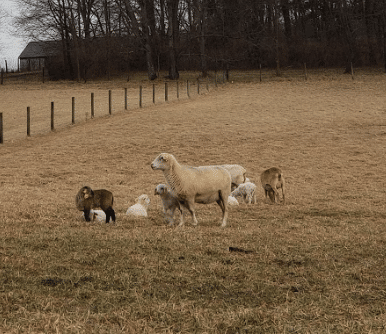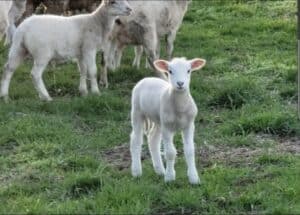
In just a few short weeks, our Dorset/Katahdin ewes are due to lamb! Lambing season is always an exciting time here on the farm and with 40 ewes set to give birth, this year should be no exception.
Though lambing usually happens in the span of just a handful of days, the lead up and preparation period is many months in the making, though it’s important to note that all this is to make sure the ewes and lambs are as comfortable as possible, ideally without the need for us to intervene.

Like all of our animals, the ewes spend their days out on pasture for optimal nutritional benefits (and for the least amount of complications during lambing), though they have access to part of the barn to come in and out as they please. We’ve found that given the option, the sheep prefer to be outside as much as possible, but with the weather somewhat touch and go in the early months of the year, we pushed back our breeding period to early November of last year so that the lambs would be born out of range of the extreme cold.
In February we took an opportunity to have our shearer Micah come out and shear our pregnant ewes before they got too big and the wool got too unmanageable.
Currently, we’re in the process of constructing the lambing jugs, which are temporary corrals that we set up in the barn for each of the ewe and lamb groups. Occasionally the first time mothers will reject their lambs or favor one lamb over the other if she has twins, and in those cases we like to bring in the ewe and lamb to a jug for a day or two to encourage bonding and nursing. We will also use the jugs to bring in ewes who are having complications with birth. Otherwise, we like to let them go undisturbed and let nature take its course.

That’s of course not to say that we don’t keep a close eye on things. During this waiting period, Mac and his assistant Gerardo are checking the flock multiple times a day and looking for early signs of upcoming births and delivery, and any obvious issues. Once the frenzy begins, they will make sure that each lamb is given an ear tag (an important identification for our farm) and any ram lambs are banded. We then note each lamb in our records, which is a requirement of our organic certification, and give them a tetanus vaccine to prevent Tetanus, which sheep are prone to.
There are also times when, despite our best efforts, a ewe will not bond with her lamb in which case we use colostrum in a bottle to feed the lamb. Colostrum is the first milk that lambs ingest after birth and helps them to get the essential nutrients they need before they build up their immune system. Each year we freeze extra colostrum that we are able to milk from the ewes to freeze and then thaw in case of emergencies. We affectionately call these lambs “bottle babies” and while they’re very cute, we hope for the least amount of them possible each year.

Lambing season always brings surprises, some good and some hard, but being well prepared is the best tool we have in ensuring that the next generation of sheep and their mothers are as healthy as possible.


Made with 
